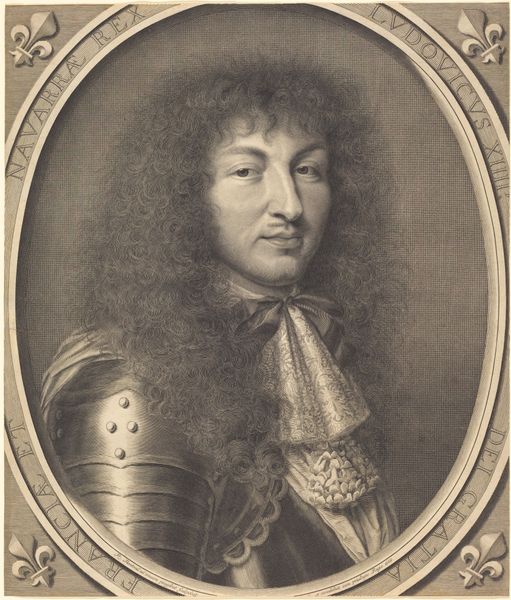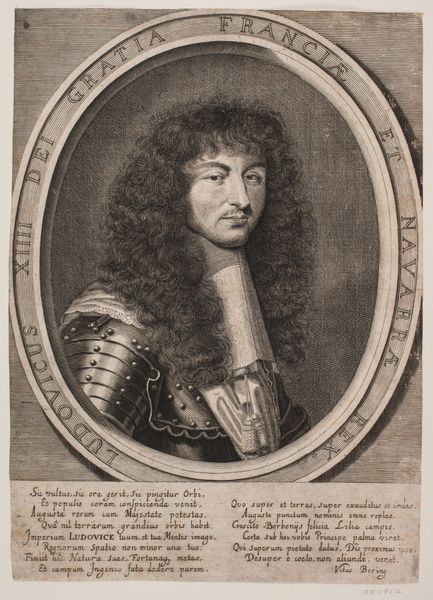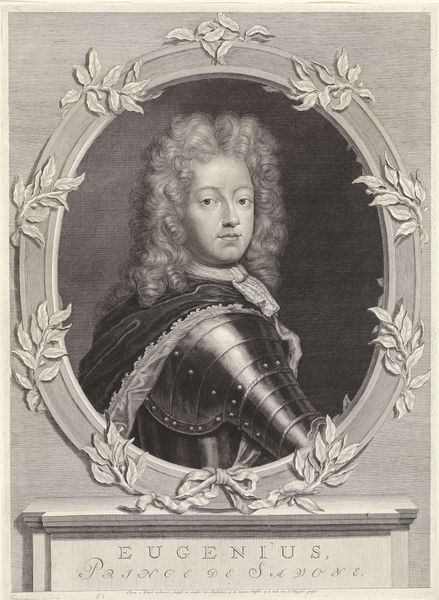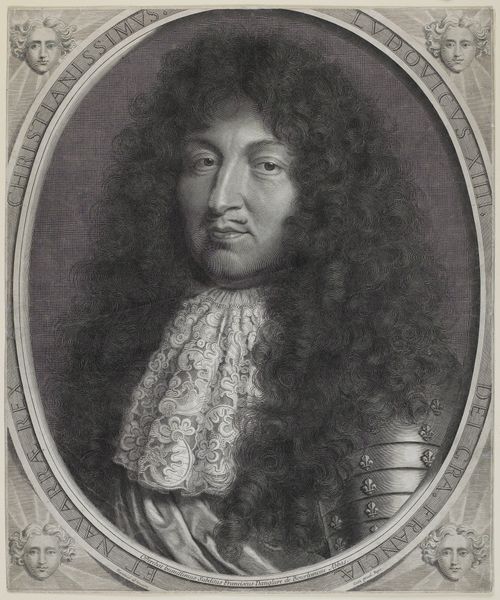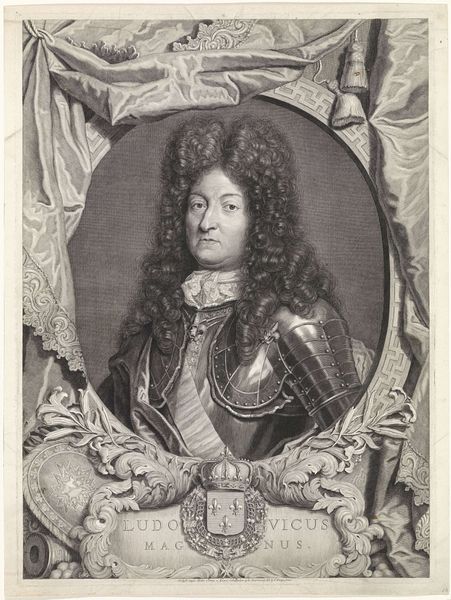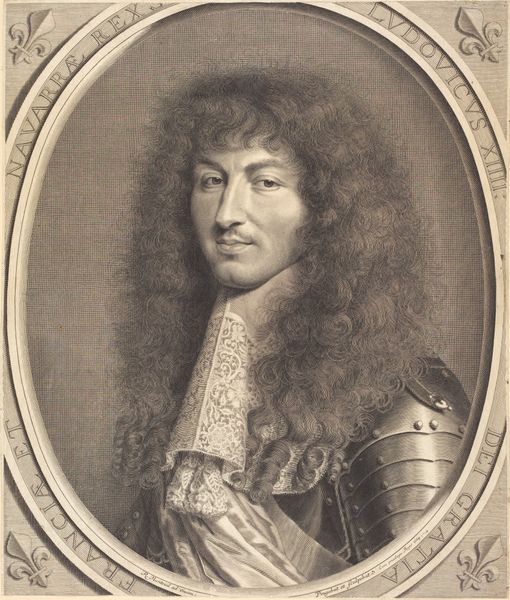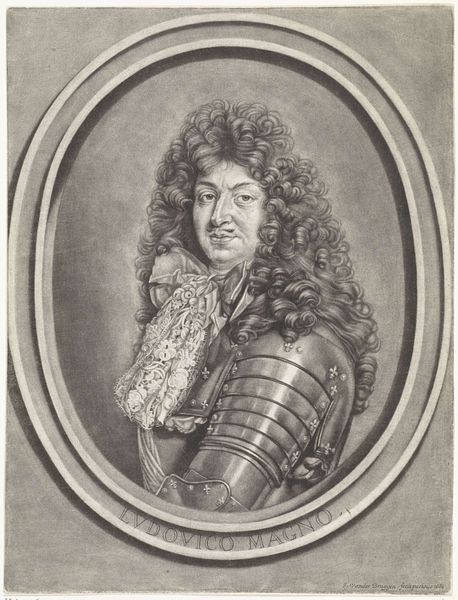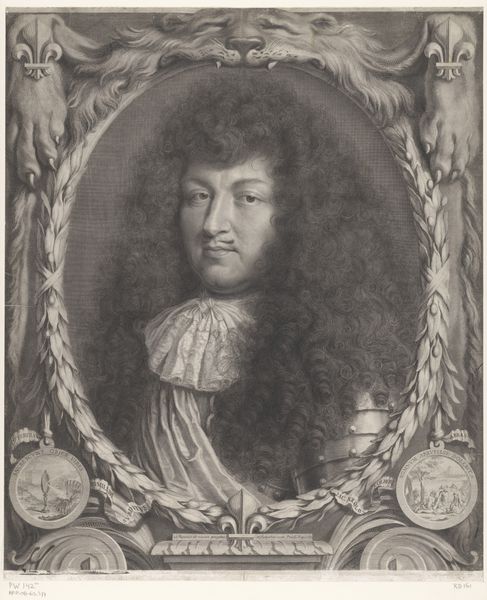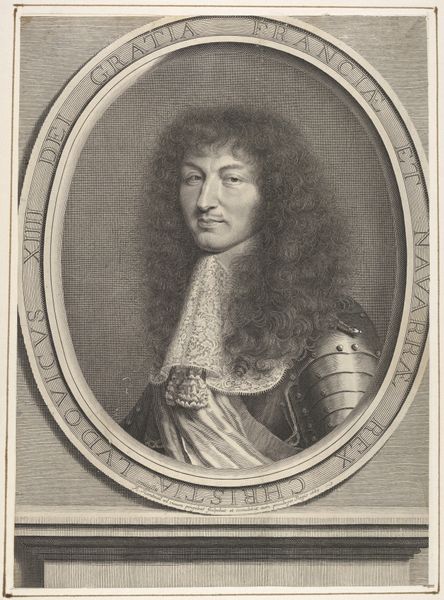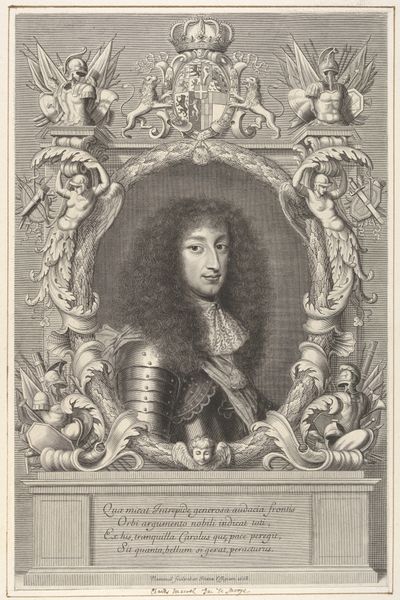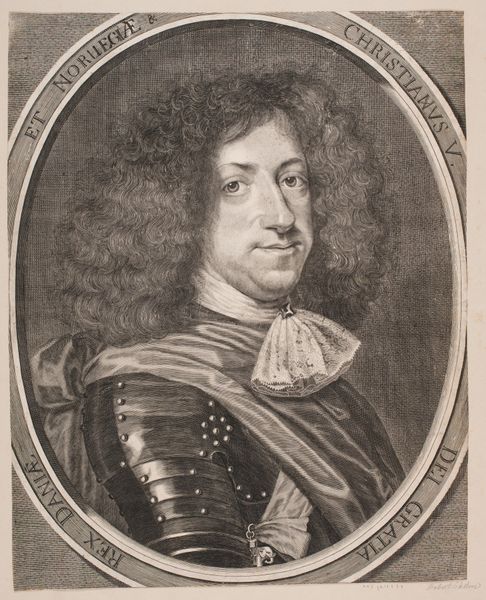
print, engraving
#
portrait
#
baroque
# print
#
figuration
#
line
#
history-painting
#
engraving
Dimensions: sheet (trimmed to plate mark): 44.9 x 37.9 cm (17 11/16 x 14 15/16 in.)
Copyright: National Gallery of Art: CC0 1.0
Editor: So, this is Robert Nanteuil’s engraving of Louis XIV, dating from 1670. I’m immediately struck by the sheer texture created with the lines - it’s amazing. What’s your take on this piece? Curator: As a materialist, I see this portrait primarily as a product of its time, reflecting specific production methods and societal structures. Consider the engraving process itself. Each line is carefully etched, representing countless hours of skilled labor. This isn’t just about depicting Louis XIV; it's about the immense craft and time invested in visually constructing power through reproducible means. Editor: Reproducible means, that's key. So the King is being mass-produced, almost? Curator: Precisely. This engraving, as a multiple, democratizes the image of the King, disseminating his power and image to a broader audience than a unique painted portrait would allow. Think about the economics of this - Nanteuil needed patrons to sustain his workshop. Editor: I never considered that angle. Curator: Furthermore, the materials themselves – the copper plate, the ink, the paper – are all commodities within a growing European market. This portrait isn't just a likeness; it's an object embedded within networks of production, distribution, and consumption that supported the absolutist state. Editor: That's a completely different perspective. The lines aren't just lines; they represent so much more about how society was functioning then. Curator: Exactly. We see not just the King, but also the economic engine and material processes behind his image. It is an intersection of artistic skill and the birth of media and reproducible means to represent royal authority. Editor: It is more interesting now. I had focused on the aesthetic only before. Thank you.
Comments
No comments
Be the first to comment and join the conversation on the ultimate creative platform.
